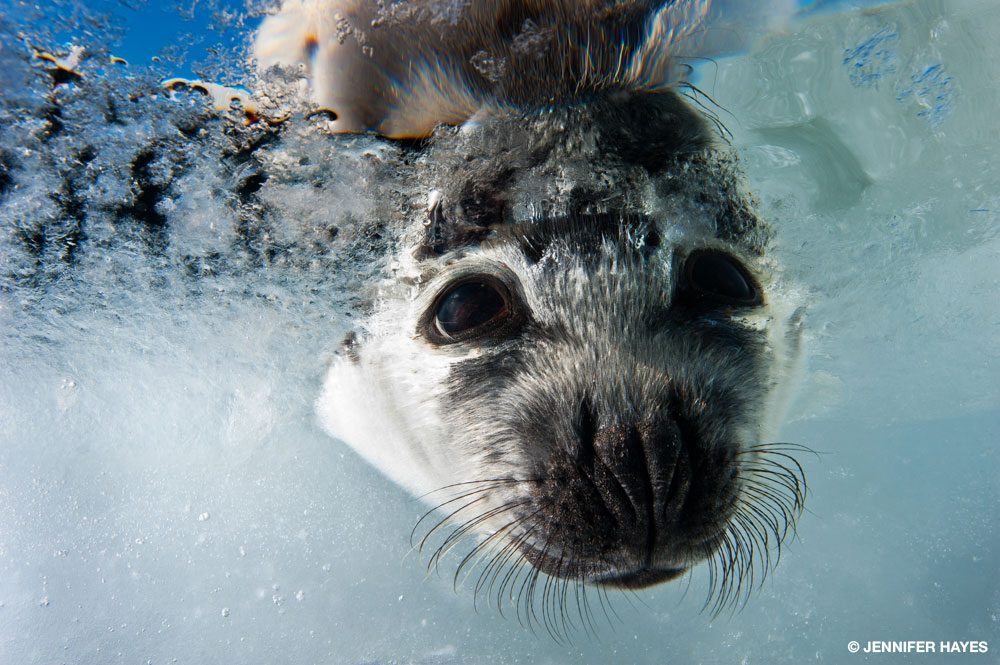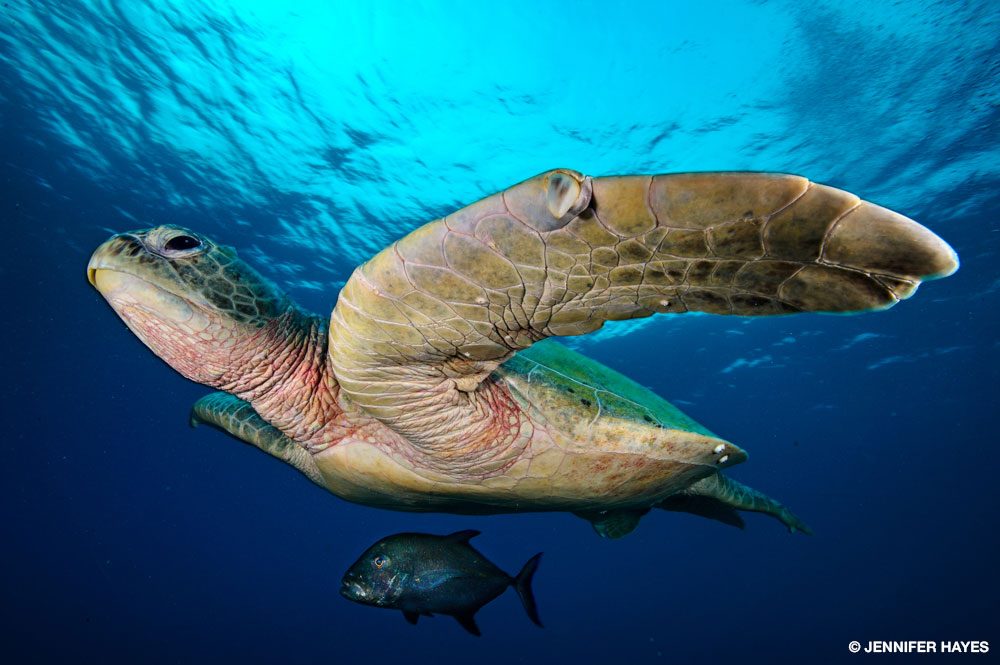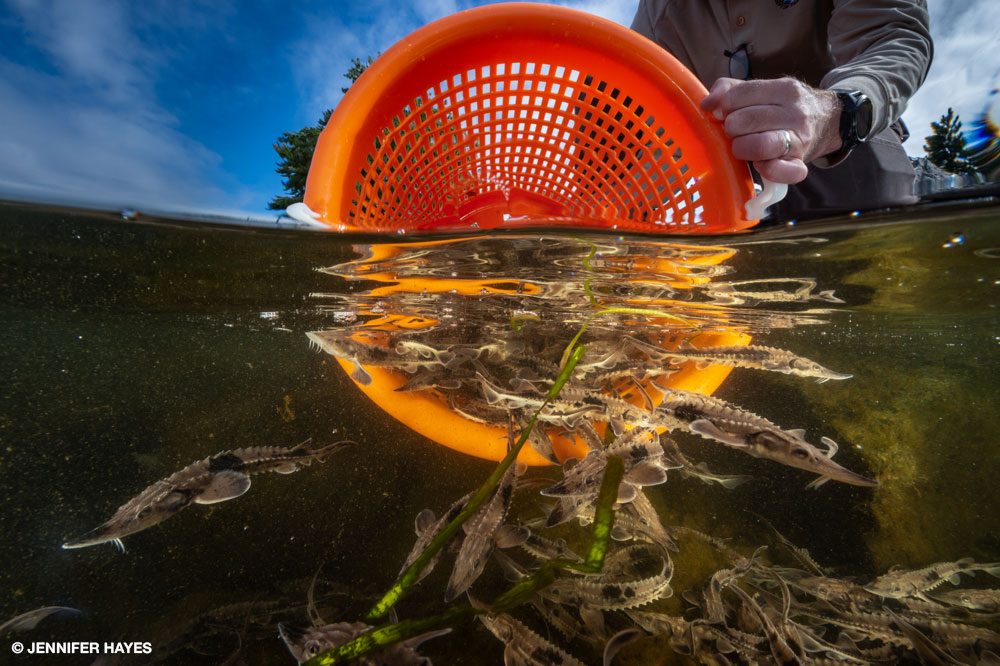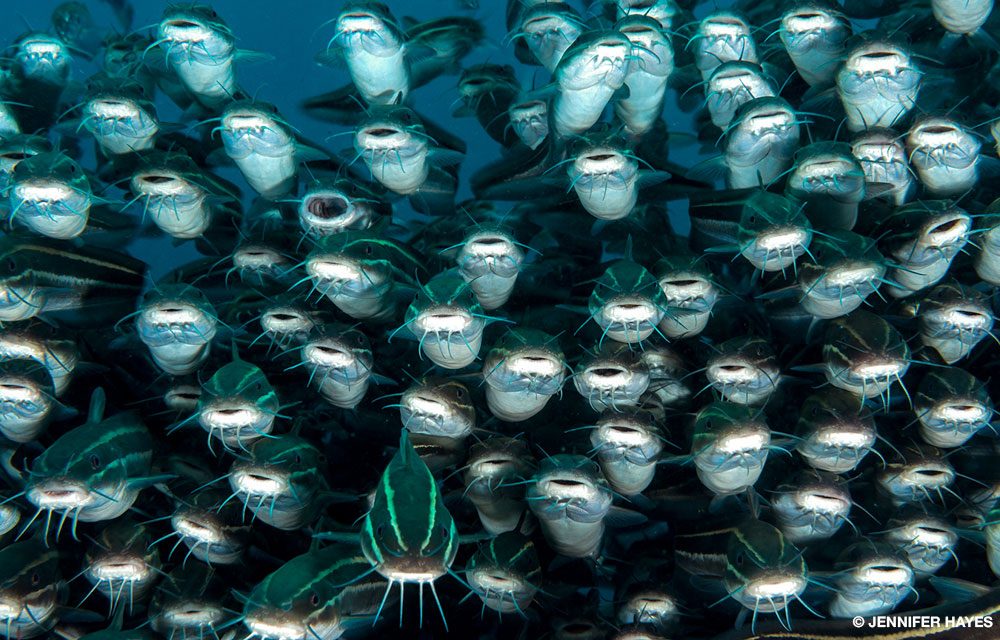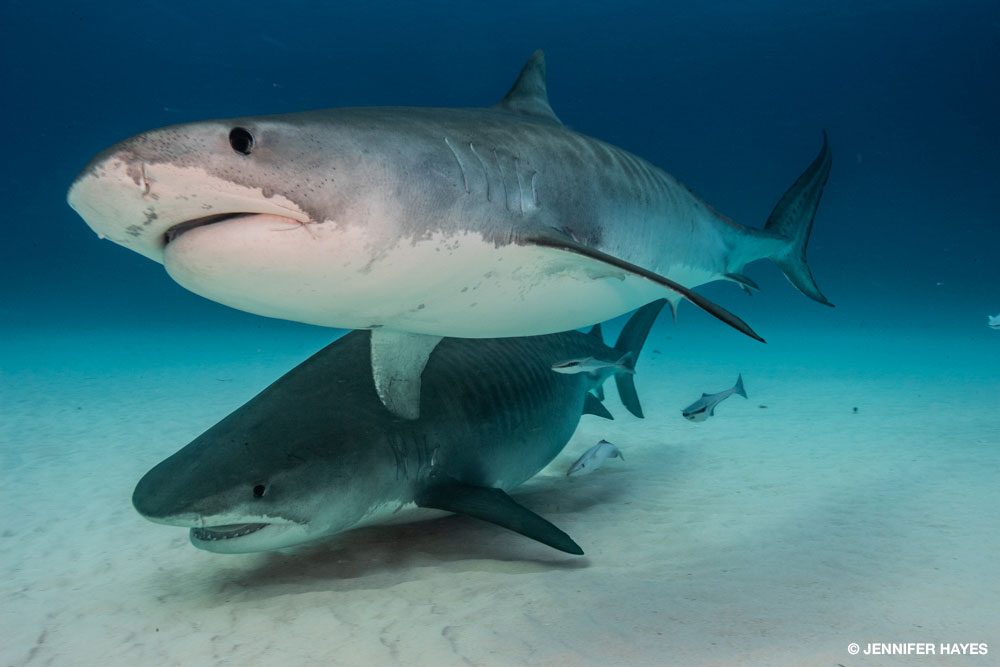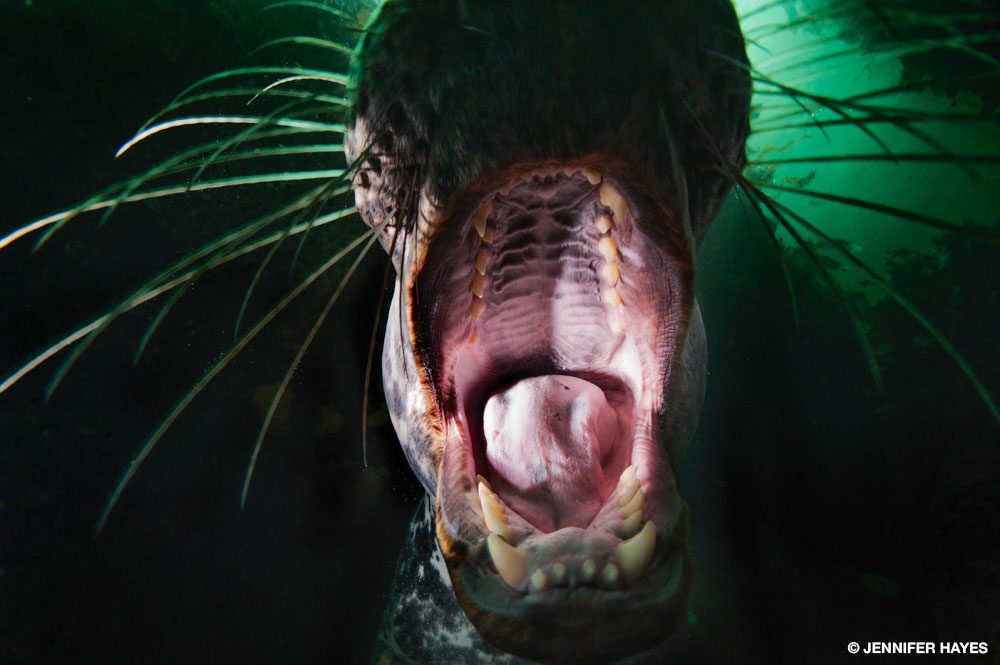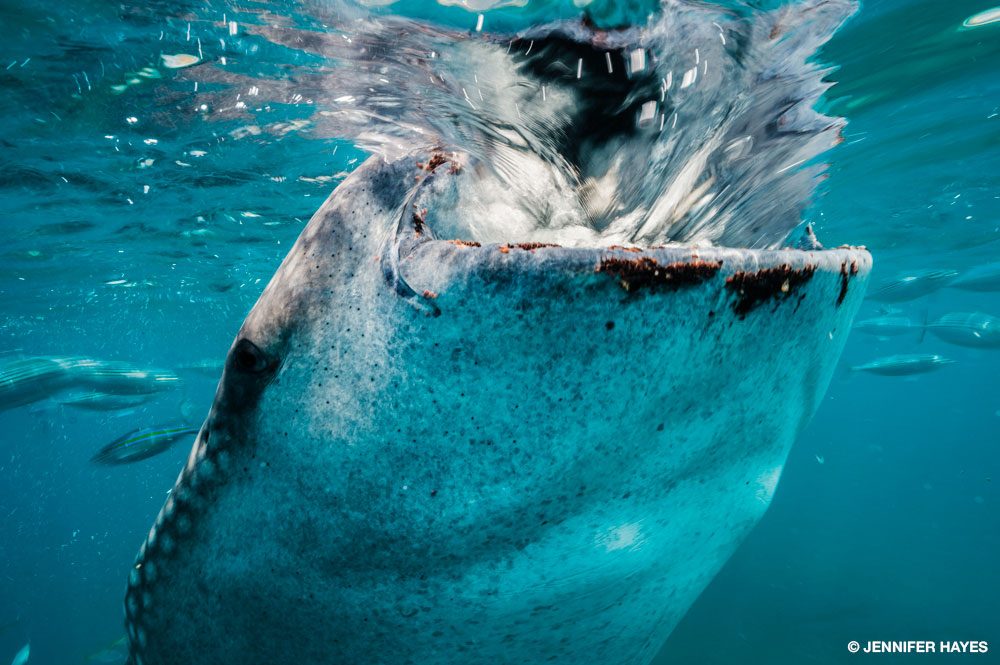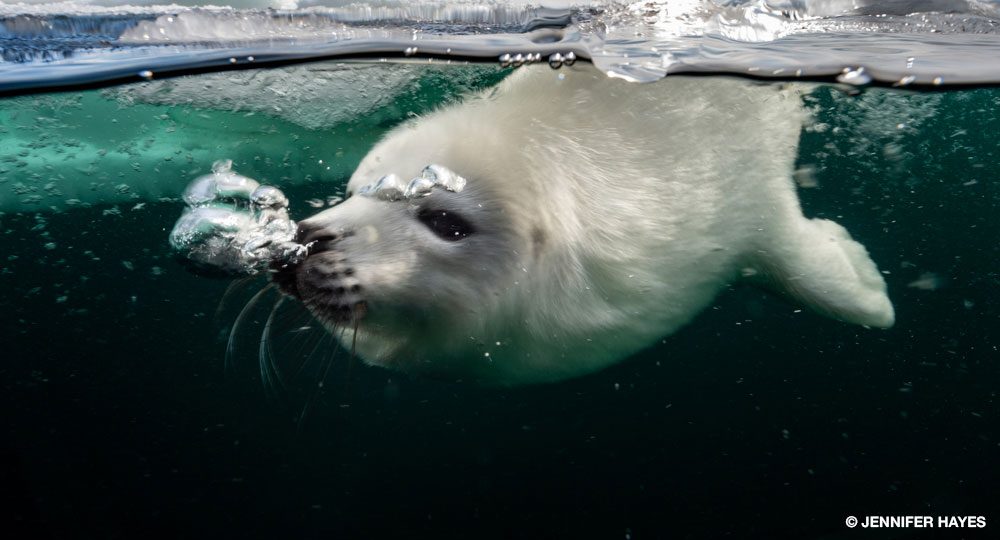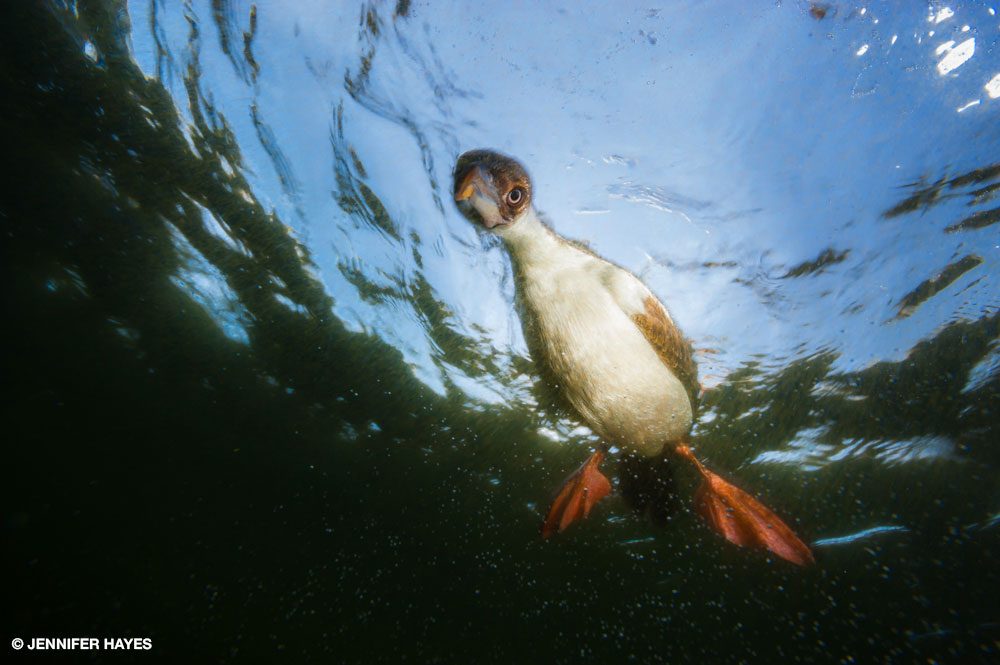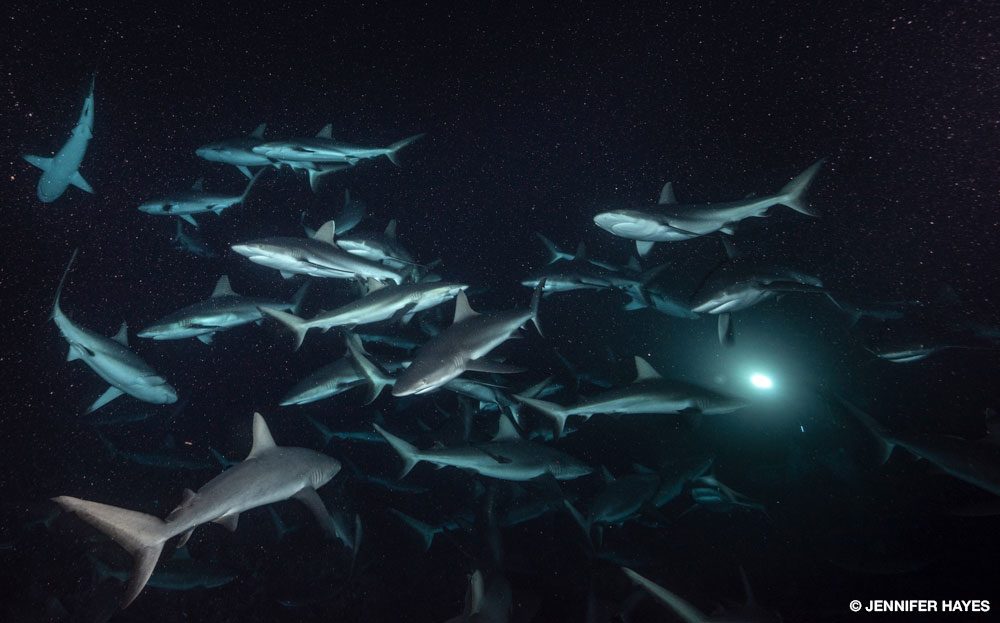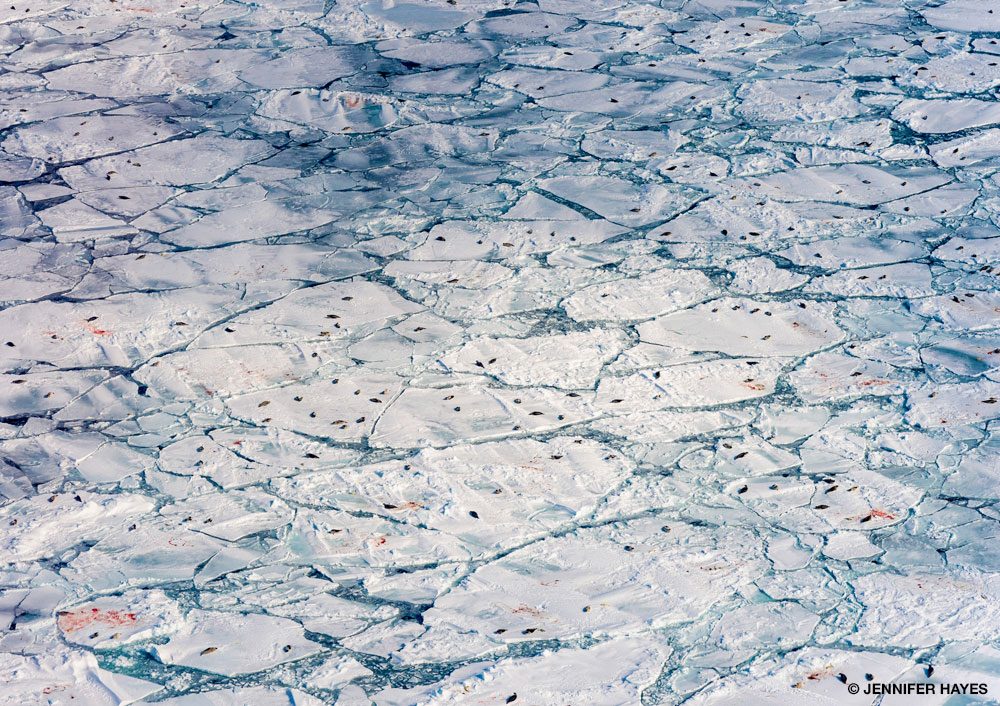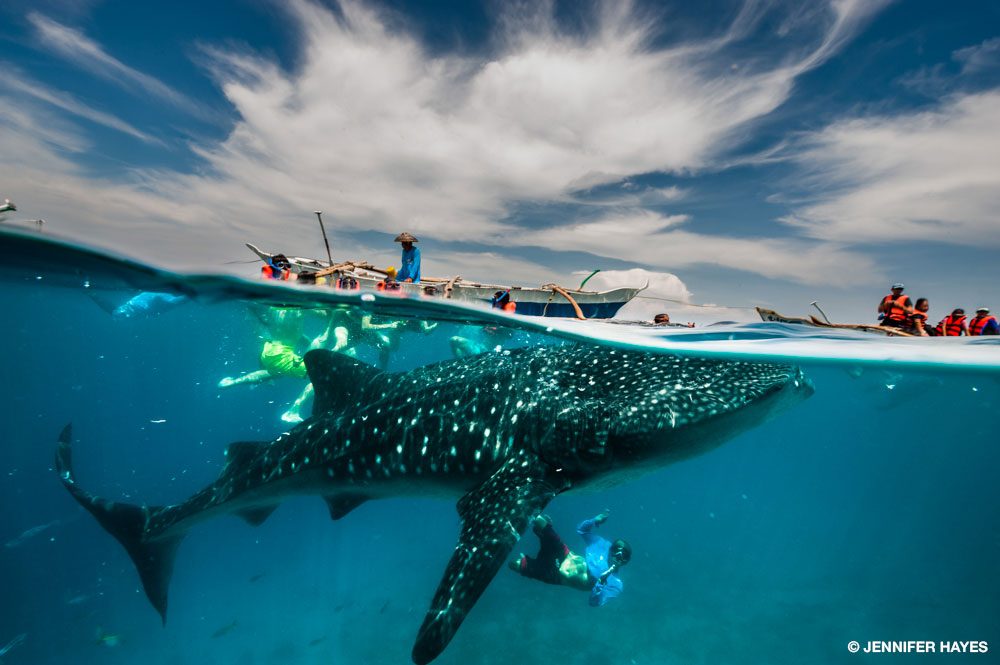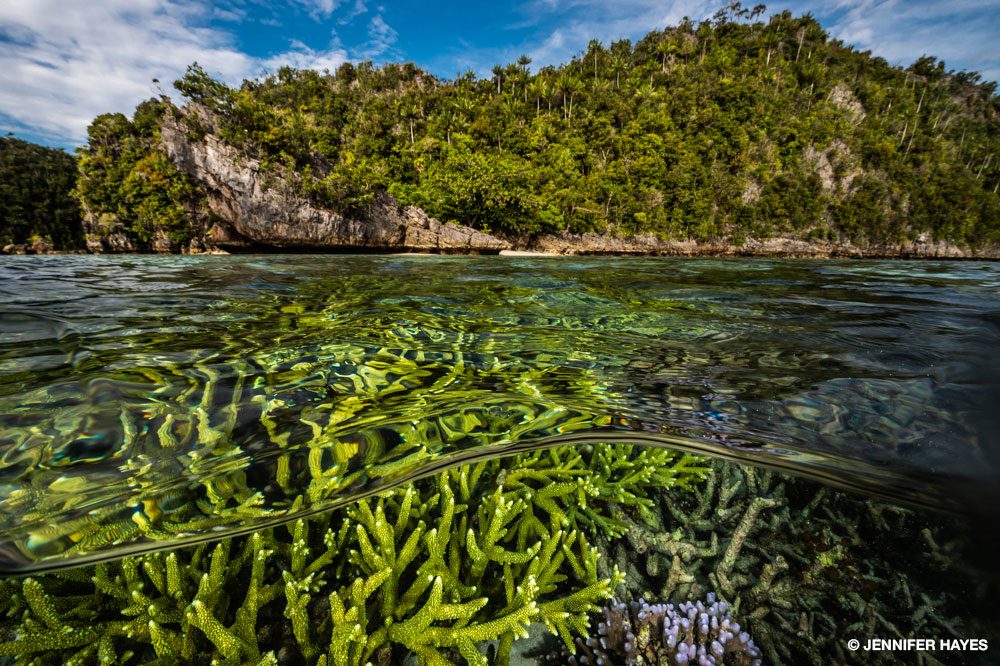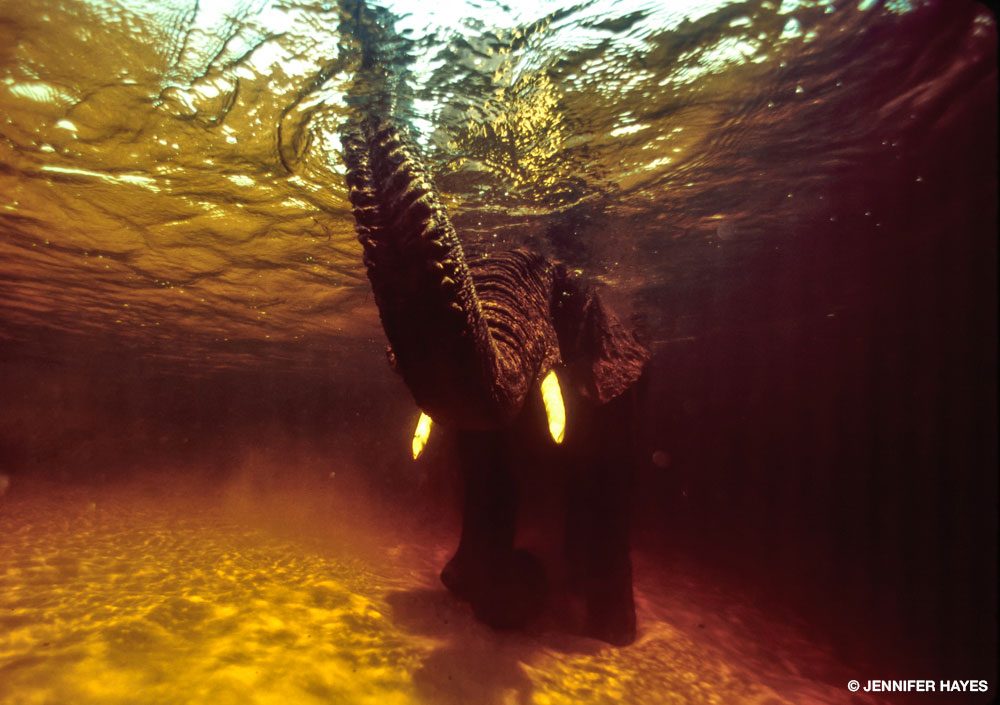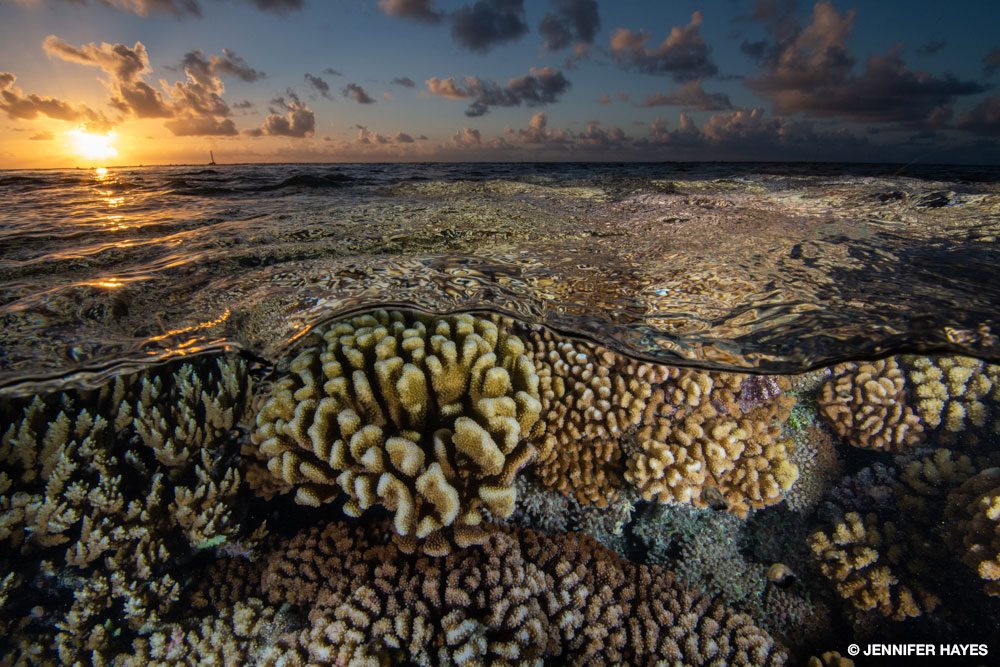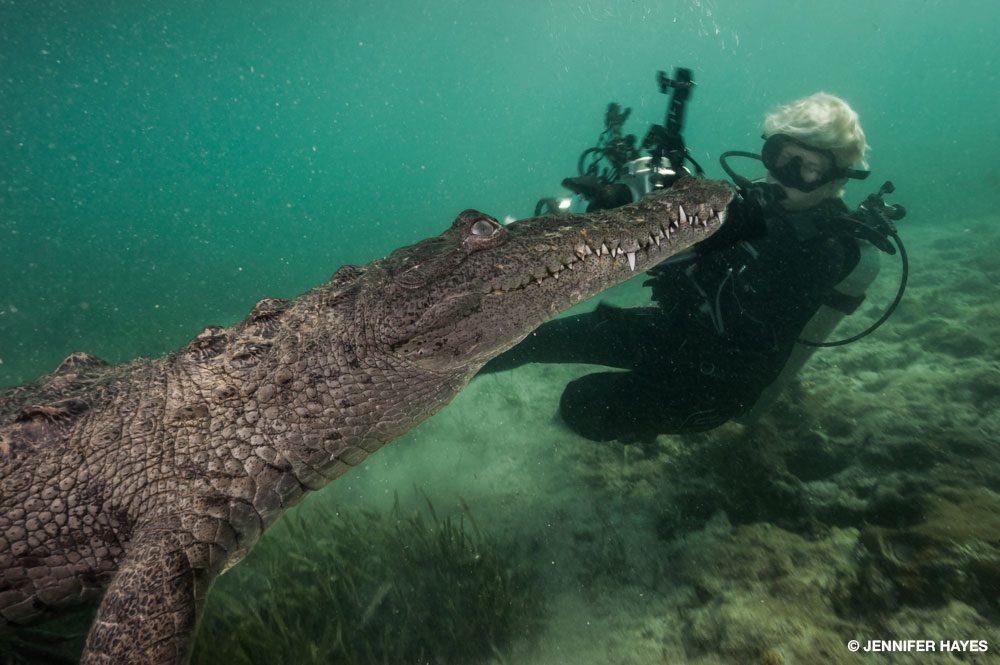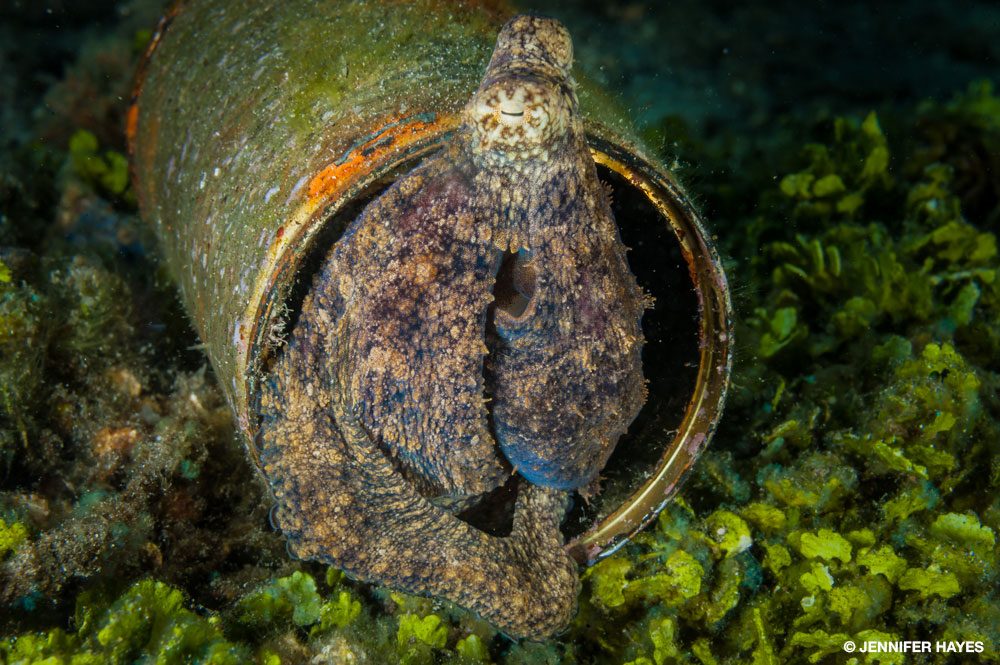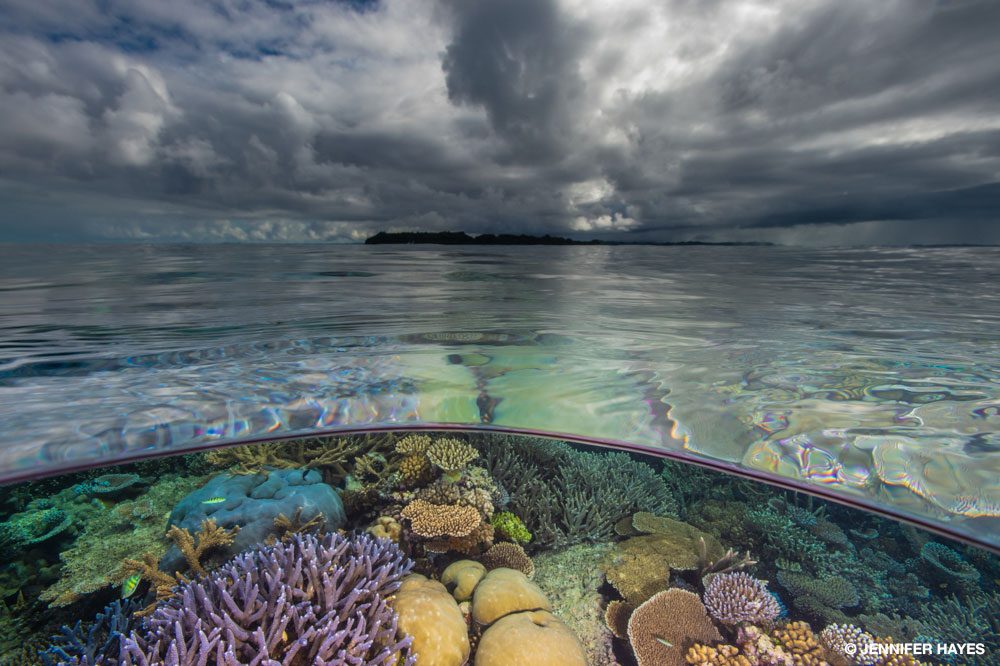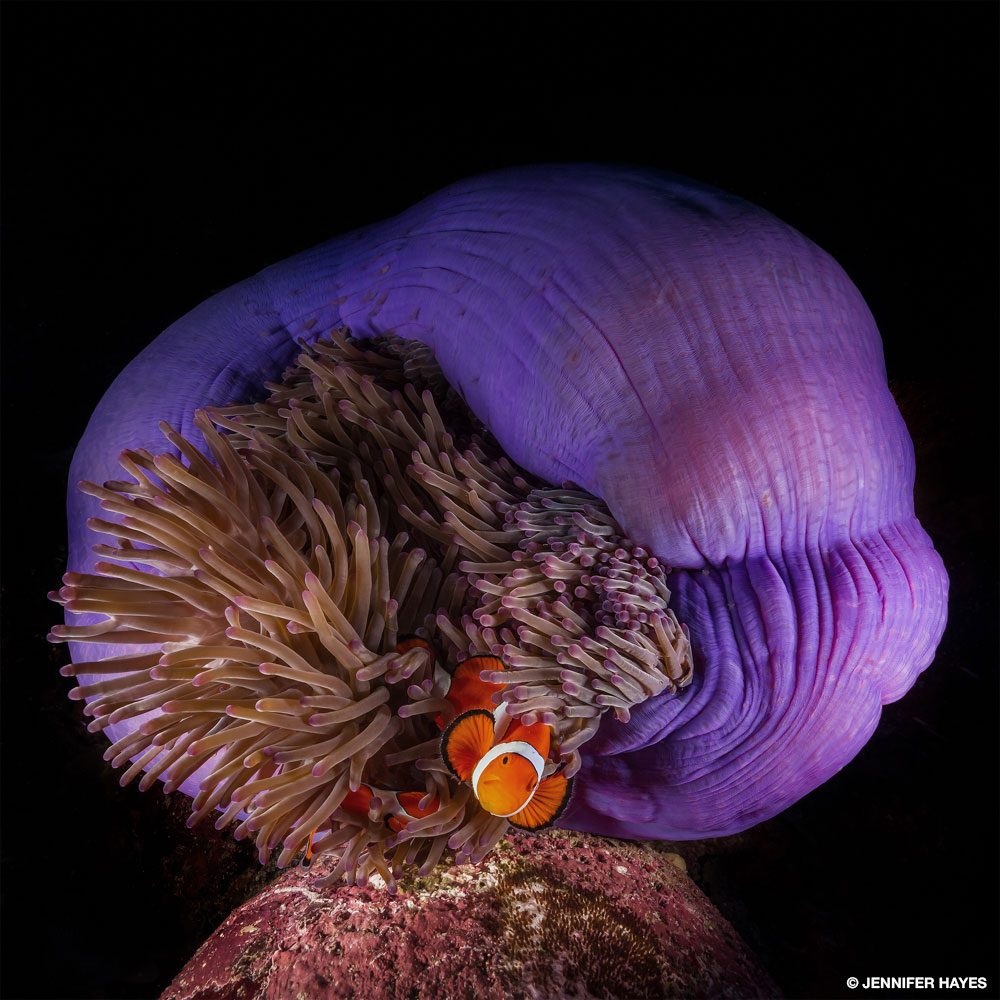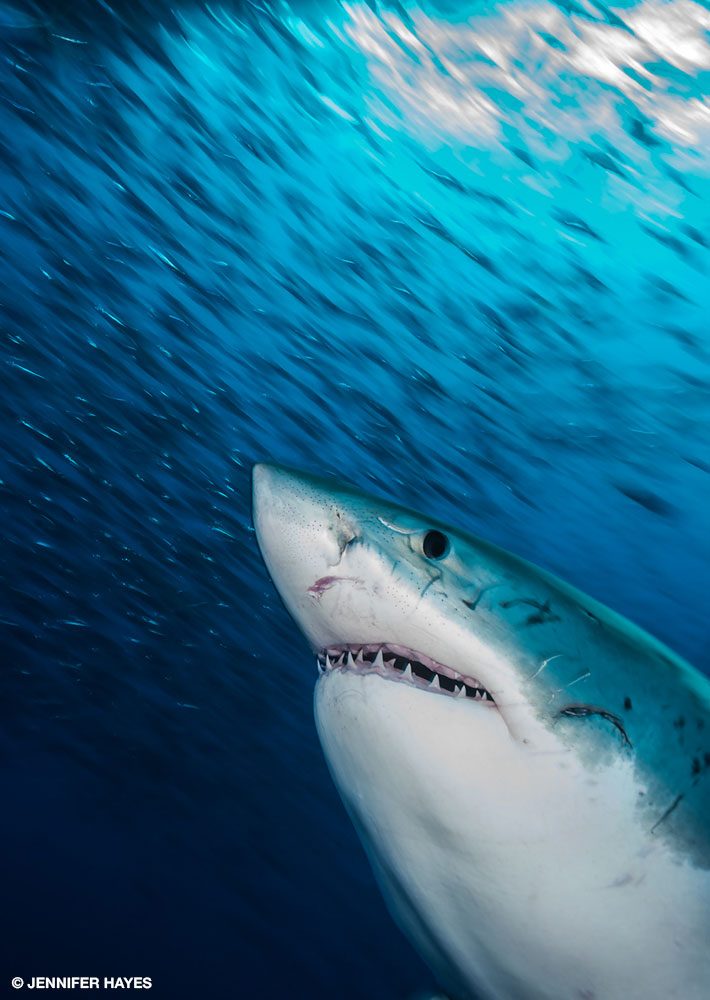Konservasi dan Kolaborasi dengan Kamera
PEMBACA AKAN MENGETAHUI BYLINE “David Doubilet and Jennifer Hayes” from scores of National Geographic fitur majalah. Bekerja sebagai sebuah tim, mereka telah memotret lautan liar dari daerah tropis hingga ke daerah kutub, dan bahkan beberapa dunia akuatik yang tidak biasa di antaranya. Di balik layar, Hayes dengan jenaka menggambarkan kemitraan mereka sebagai kemitraan yang sangat tidak mungkin Green Acres pasangan.
Doubilet grew up in a home in New York City, and Hayes came from a family of dairy farmers living on 1,500 acres at the edge of Lake Ontario in upstate New York. Her early life related to their Holstein dairy, yet her rural background didn’t prevent her from developing a crush on Marlin Perkins from his Kerajaan Liar series. Inspired by his treks through nature, Hayes rode horses to explore local creeks and ponds, in her words “looking and collecting and doing.”
Meanwhile, her parents were more pragmatic. Their veterinarian bills were enormous, so they thought it would be great if at least one of their five kids became a vet. Hayes seemingly oriented to that idea, choosing to attend junior college during her senior year of high school to get started in science. There she met a biology professor who “kicked down some barriers in my mind,” she said.
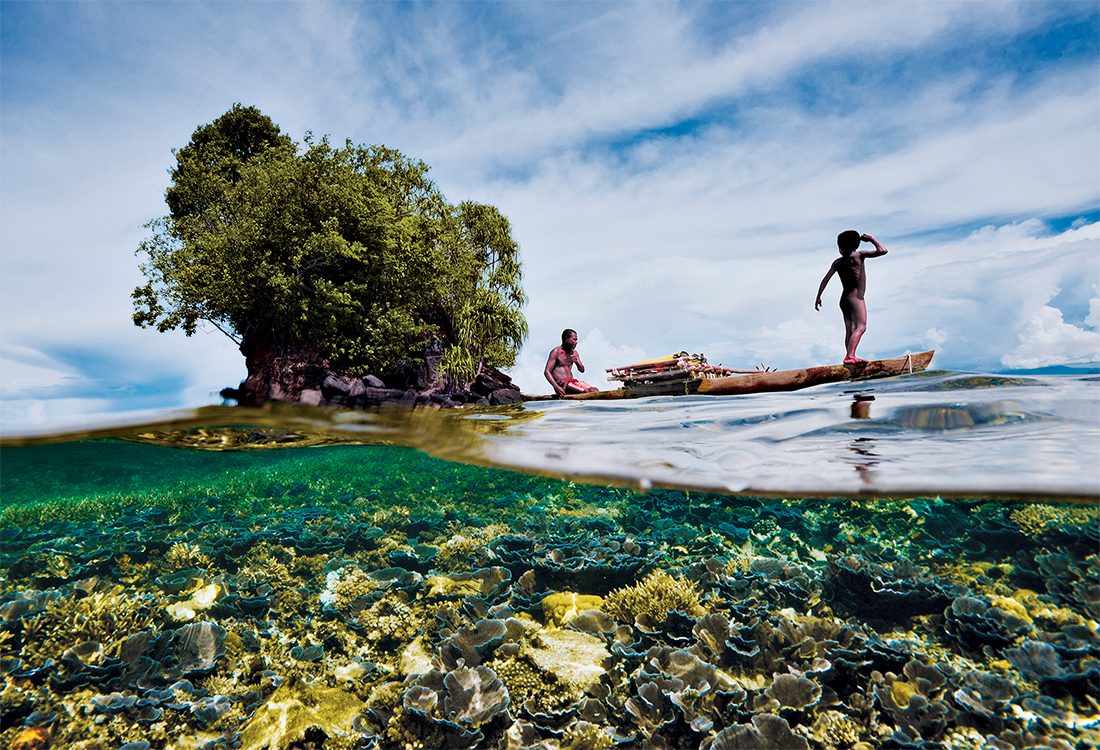
Hayes embraced science and went on to receive a bachelor’s degree in biology from the State University of New York (SUNY) at Potsdam. She dutifully rode with a large-animal vet, took the Graduation Record Examination (GRE), and applied to Cornell University. She chose instead to pursue a master’s degree in zoology at the University of Maryland, where she entered as Eugenie Clark’s last graduate student. Her research under Clark focused on shark fisheries in the northwest Atlantic, which kept her at sea off the East Coast documenting shark landings.
Clark, known as “the shark lady,” was an ichthyologist of great renown, founder of Mote Marine Laboratory (originally known as Cape Haze), and instrumental in conceptualizing scuba diving as a tool for marine research. Diminutive in height, she was a giant of charisma and an influencer before the word was mainstream. She inspired Hayes to weigh practical pathways against the impractical but rewarding paths in the study of primitive fishes.
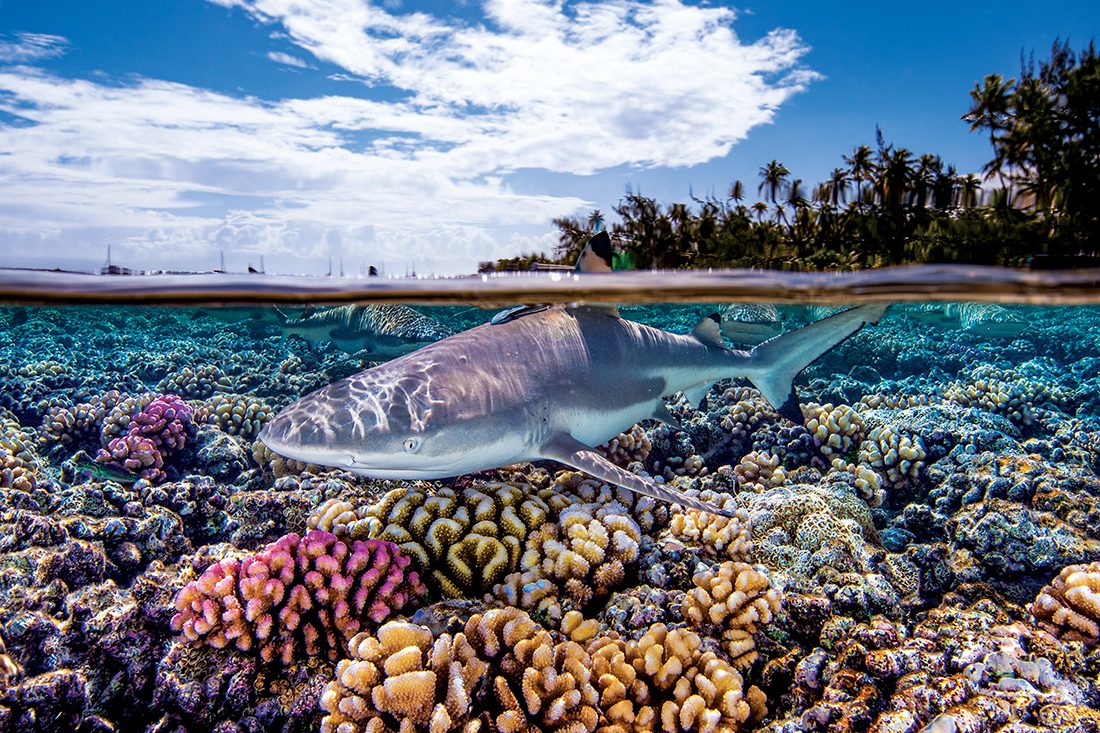
Hayes memasuki dunia korporat di Washington, D.C., sebagai ahli biologi yang mempelajari dampak pada Teluk Chesapeake. Dia maju dalam pekerjaannya, membangun tim yang kuat, mendapatkan gaji yang tinggi dengan tunjangan liburan yang berlimpah, dan 100 persen memiliki hak atas rencana 401(k). Kedekatannya dengan Chesapeake, bagaimanapun, menarik hatinya untuk berada di bawah air mempelajari perilaku ikan.
Setelah jam kerja, ia menulis proposal untuk penelitian sturgeon dan memperoleh dana dari New York Power Authority. Dia mengundurkan diri dari jabatannya di DC dan membawa dana tersebut ke SUNY College of Environmental Science and Forestry untuk penelitian doktoralnya mengenai telemetri sturgeon danau dan dinamika populasi di Sungai St.
To her colleagues’ surprise, Hayes chose an $8,000 per year stipend, a tin jon boat equipped with nets, and a golden retriever over a comfortable salary and never looked back. Clark had been right: Follow your heart, not the 401(k).
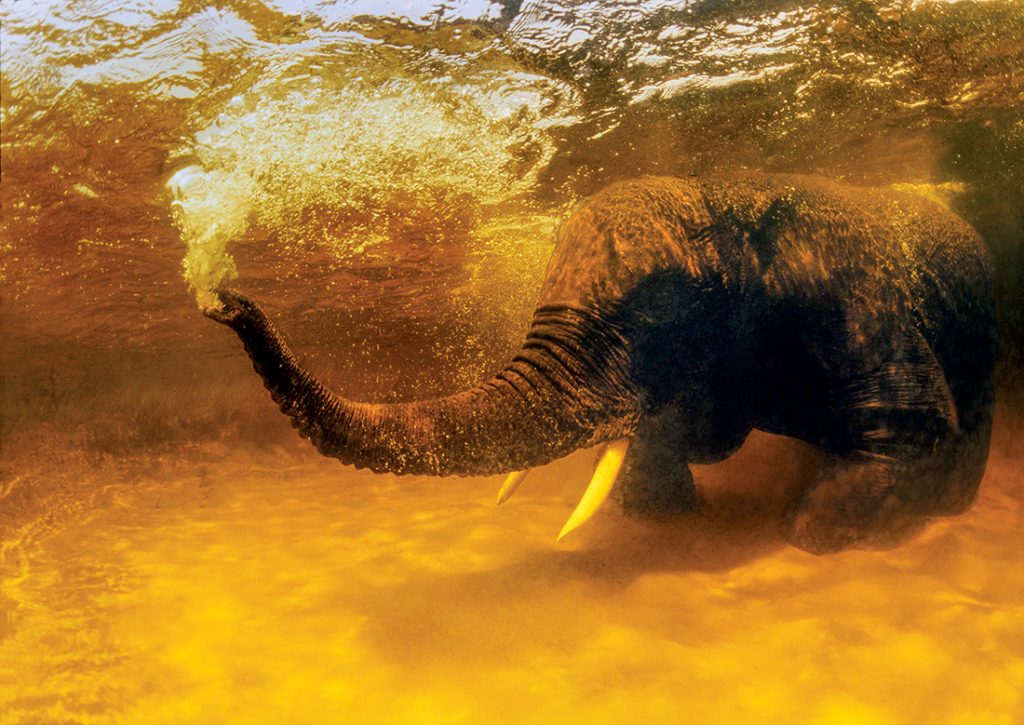

Saya melihat di mana semua jalan menuju ikan, baik air tawar maupun air asin, tetapi bagaimana fotografi menjadi bagian integral dari hidup Anda?
Seperti kebanyakan dari kita yang sedang memotret, ilmu pengetahuan mengarah pada penceritaan. Penelitian berarti presentasi internasional tentang data lapangan kepada kolega dan pemangku kepentingan. Sebagai ahli biologi perikanan, saya mempresentasikan grafik dan statistik untuk menggambarkan perilaku ikan raksasa purba. Saya menggambarkan keajaiban yang saya saksikan di bawah air, mencoba melukiskan gambaran mental untuk audiens yang terlibat, yaitu sebuah suku kecil namun sangat berdedikasi di mana kami saling belajar satu sama lain.
Rekan-rekan kerja memiliki banyak pertanyaan: Apakah satu betina bertelur pada satu waktu dengan beberapa jantan? Apakah mereka tinggal? Apakah ikan memakan telurnya sendiri? Apakah mereka lebih menyukai substrat tertentu? Ikan sturgeon adalah ikan yang pemalu dan jarang sekali bisa diakses, tetapi saya memiliki sebuah jendela, sehingga saya harus serius mendokumentasikannya. Fotografi bawah air dengan cepat menjadi alat penelitian yang penting.

Bagaimana Anda belajar fotografi bawah air? Memotret ikan sturgeon di air keruh di St Lawrence terdengar seperti spesies target yang menantang, dari segi fotografi.
Truthfully, the greatest challenge was the limited time I had with them. There’s a maximum of one week each June when they migrate to the spawning areas where they congregate, are pumped on hormones, and ignore your presence or maybe even try to spawn with you. I splurged on an underwater housing with a wide-angle lens and, rather stupidly, a costly glass dome with strobes and the requisite Nikonos V (with a fisheye lens) draped around my neck for an extra 36 frames.
Saya bekerja melalui kurva pembelajaran yang curam tentang banjir, kubah yang tergores, dan bingkai yang kurang cahaya. Para leluhur muncul, dan saya menciptakan gambar sturgeon yang melakukan hal-hal rahasia sturgeon. Hibah dari pemerintah federal, negara bagian, dan swasta datang lebih cepat ketika para penyandang dana menyadari bahwa mereka dapat mendokumentasikan secara visual investasi konservasi mereka pada spesies yang terancam punah ini.
Saya belajar dengan cepat bahwa foto memiliki kekuatan dan pada kenyataannya jauh lebih berharga daripada 1.000 kata atau bit data. Foto-foto tersebut menghasilkan cerita dalam publikasi konservasi, NPR, the New York Timesjurnal yang diulas sejawat, dan kontribusi buku.

Anda meninggalkan air tawar menuju laut, sebuah kemitraan, dan National Geographic?
David dan saya bertemu seribu tahun yang lalu di bawah air di Bimini, Bahama, tempat saya meneliti hiu lemon bersama mendiang Sonny Gruber dari Universitas Miami. Untuk menangkap hiu betina yang sedang hamil, saya memasang blok rig dan stasiun umpan berbobot di perairan dangkal dengan tujuan untuk melacak tempat hiu melahirkan.
I was underwater assessing a female when someone submerged with a fancy camera and began taking pictures. That somebody was David Doubilet, who was there to document Gruber’s program. We brought the female to the surface, quickly attached her transmitter, and released her. She swam for the shallows and began birthing her pups. David had what he came for: the first birth of a shark. Our team had what we came for: more proof that lemon sharks drop their pups near the protective cover of mangroves.
Kami kemudian bertemu di laboratorium kelautan, lapangan, dan National Geographic over many years as I assisted on various grant projects. A Doubilet–Hayes partnership formed, where I would submit images, and selects got published, but it was rightfully a David Doubilet vision and byline in those days. Eventually, editors suggested a shared byline.
Maju cepat ke masa sekarang, dan baik David atau saya mungkin akan mengajukan sebuah tugas tergantung pada minat kami, yang bisa jadi sangat berbeda. Saat ini saya sedang mendokumentasikan dua cerita panjang untuk National Geographicpandangan global terhadap anjing laut sturgeon dan harpa sebagai wajah perubahan iklim.
No matter where the inspiration originates, we generally approach these assignments as a team — unless it involves a snowmobile, snowshoes, skis, or a horse, and then it is all mine.

Dengan dua pemotret yang begitu berbakat dalam satu tugas, apakah ini kompetitif untuk pemotretan? Atau apakah Anda menghitung siapa yang mendapatkan lebih banyak foto dalam artikel akhir?
There is zero competition. The story is far more important than the credit — his, mine, or other contributors. Every single click of the shutter is a team collaboration that includes the people who fill the tank, drive the boat, or guide you to a subject. Land in a different country and see how far you get without priceless support. The best part of any assignment is submitting an assistant’s work along with our own — or better yet, discovering a body of work out there and getting their coverage in front of the right editor.
National Geographic Partners telah menjadi wadah bagi kami untuk berkolaborasi dalam banyak cerita, proyek buku, Ekspedisi Lindblad, dan tur berbicara di Nat Geo Live. Kami juga mengerjakan proyek komersial dan pribadi, dengan mengutamakan kolaborasi konservasi.
It has been a privilege to support the Ocean Geographic Elysium Expeditions in Antarctica, the Arctic, the Coral Triangle, and most recently the Antarctic Climate Expedition in February 2023. A team of established and emerging photographers, videographers, scientists, musicians, writers, and artists create a body of work that includes a book, film, and an exhibition that goes on tour where it will have the most impact — not museums or out of the way art galleries, but major shopping malls in places such as Beijing, Shanghai, and Chendou, China, where young people come to buy the next new thing. These projects are well worth the investment. The best part is working with old friends and making new ones.


We’re friends on social media as well as in real life, and I’ve noticed some of your most highly trafficked posts are videos. Do you find yourself moving more in that direction?
Moving or moved? We have a clear mandate now: Don’t come back without the video. Video is probably half of what I do. Not surprisingly, I am the designated videographer among us. I’ll use whatever it takes — GoPro, drone, dedicated iPhone, or digital camera.
Disney sekarang memiliki National Geographic Partners, jadi pikirkan semua saluran yang ada untuk mengintegrasikan video ke dalam proyek kami: Program khusus Disney, TikTok, Instagram, afiliasi ABC, produksi YouTube, tur berbicara, dan Ekspedisi National Geographic. Permintaan tersebut menambah disiplin yang harus kami tangani dengan serius.
Hal baiknya adalah saya menikmatinya. Hal buruknya adalah beralih antara foto dan digital. Apapun format yang saya gunakan untuk memotret, saya pikir saya harus menggunakan format yang lain. Saya hanya bisa berharap bahwa jika saya merekamnya dalam bentuk video, David juga merekamnya dalam bentuk gambar diam.


Apa yang akan terjadi di masa depan?
We’re directing our efforts on conservation, collaborations, and the next generation of ocean advocates. We are specifically interested in giving voice, space, and place to emerging talent by getting them on our shoulders to reach higher — or deeper in our case. We are stalking scientists and their work toward solutions in the sea and bringing their stories out of peered-reviewed papers and into the public eye.
Kami berada di Raja Ampat, Indonesia, pada bulan Januari 2023 untuk melakukan ReShark, sebuah solusi baru yang sederhana untuk konservasi hiu: Mengembalikan hiu ke laut. Mark Erdmann dari Conservation International melihat sebuah peluang ketika mengetahui bahwa akuarium-akuarium yang berisi hiu zebra memiliki telur hiu zebra yang berlebih. Mengetahui bahwa kawasan konservasi perairan di Raja Ampat dulunya memiliki populasi hiu zebra, ia pun mendapat ide. Kini, ReShark mewakili lebih dari 70 pemangku kepentingan yang merelokasi telur-telur hiu ke penangkaran hiu di Indonesia, tempat para ilmuwan kelautan setempat membesarkan dan melepaskannya.
These stories are valuable because they allow us to share hard truths about loss, provide solutions, and document conservation successes that may inspire others to innovate. You can’t beat up people and send them off with only doom and gloom.
Our job now is to prioritize projects with impact. David will focus heavily on the Oceans Through the Lens of Time project, and I will head to the Canadian Arctic on snowmobile with scuba tanks. In the meantime we will connect with other storytellers to document the most important story on Earth: Earth Itself. Keep shooting, and come find us underwater. Let’s collaborate! AD

JELAJAH LEBIH LANJUT
Pelajari lebih lanjut tentang Jennifer Hayes dan lihat lebih banyak karyanya dalam galeri bonus dan video ini.
© Penyelam Siaga - Q3 2023
